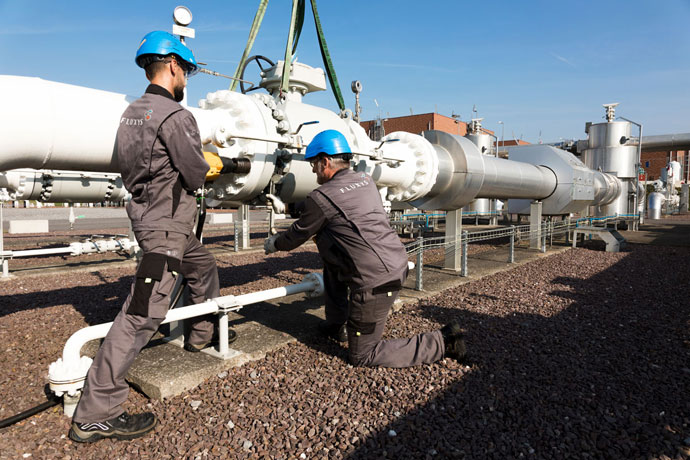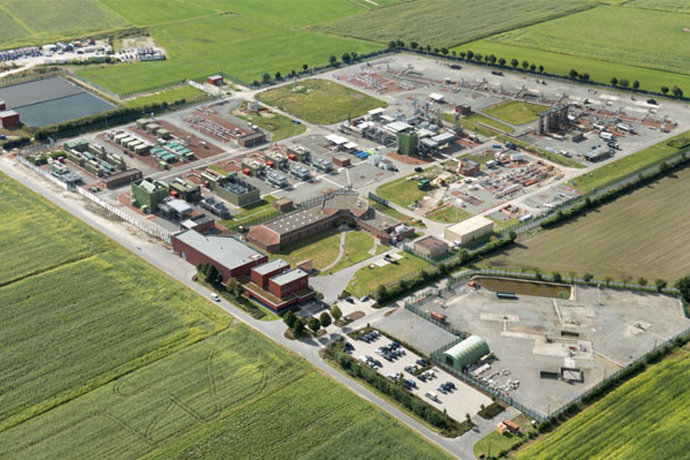Our infrastructure
Transmission Network
Excellently interconnected
Fluxys Belgium’s transmission network is excellently linked to all natural gas sources available to the European market. The system also enables gas flows in both directions with all adjacent markets. Thanks to its versatility, customers use the Belgian system both for their supplies into Belgium and for border-to-border transmission to supply other markets in Northwest Europe.
|
Network length |
4,000 km |
|
Border interconnection points |
Interconnection points with all adjacent markets: UK, France, The Netherlands, Germany and Luxemburg |
|
Network connection points in Belgium |
Connections with 17 Distribution System Operators Connections with 230 industrial sites and gas-fired power stations |
|
Compressor stations |
Berneau, Weelde, Winksele, Zelzate |
Network conversion to high-calorific gas
The gas system in Belgium consists of two separate networks: a network for high-calorific gas and a network for low-calorific gas. The latter is gas from the Groningen field in the Netherlands and exports of this low-calorific gas will progressively phase out between 2024 and 2030. Fluxys Belgium and the Distribution System Operators have proactively switched end-users of low-calorific natural gas to high-calorific natural gas, as of September 2024.
Zeebrugge LNG Terminal
LNG gateway into Northwest-Europe and beyond
The Zeebrugge LNG terminal serves as a gateway to supply liquefied natural gas (LNG) to Northwest Europe and beyond. The facility provides for unloading large LNG vessels and keeping the LNG temporarily in storage. The LNG can be regasified and injected into the transmission network for delivery throughout Northwest Europe or loaded back onto LNG ships to supply other markets. Direct transshipments of LNG between two vessels are also possible.
Large-scale and small-scale LNG
In addition to accommodate large LNG vessels and large volumes of LNG, the Zeebrugge terminal also loads small LNG vessels and LNG trailers to serve the so-called small-scale LNG market: LNG used as an alternative fuel for vessels and trucks or as fuel for industrial customers not in the vicinity of a natural gas pipeline system.
|
Maximum technical capacity Regasification capacity Transshipment capacity Storage capacity Send-out capacity |
197 TWh/year (17 bcm) 107 transshipments (214 ships)/year 566,000m³ of LNG (5 storage tanks) 30.2 GWh/hour |
|
LNG carriers received since |
Loenhout underground storage
Loenhout is a unique Fluxys facility, where we operate an underground gas storage plant which serves as a giant strategic buffer for the energy system.
|
Storage capacity |
7,610 GWh |
|
Injection capacity |
3.75 GWh/hour |
|
Send-out capacity |
7.25 GWh/hour |
Indicative 10-year Investment Plan
The indicative investment plan 2024-2033 sets out all investments needed to keep up with changes in Belgium's natural gas market, to maintain and to upgrade the infrastructure of Fluxys Belgium and Fluxys LNG and to ensure the completion of the targets set to reduce the installations’ greenhouse gas (GHG) footprint.
The investments described in this document are provided for reference purposes only and relate to gas transmission and storage infrastructure in Belgium as well as to the Zeebrugge LNG terminal.
Fluxys is committed to ensuring that new major investments are compatible with the energy transition either by reducing its GHG emissions, or by building new infrastructure that is hydrogen compliant.
The document is established in accordance with Art 15/13, §2-3° of the Gas Decree dd April 12th, 1965. An annex detailing the outlook beyond the current framework of the Belgian Gas Act has been appended to the indicative investment plan 2024-2033, which was drawn up in accordance with Article 15/1, §5 of said Act.
This annex sets out the future development of hydrogen and CO2 transmission systems in Belgium, which will be based in part on the reuse of Fluxys Belgium's natural gas transmission infrastructure. Investments will follow demand.
Download the indicative investment programme 2024-2033 (PDF 3.2MB)
Construction works near our infrastructure?
For all your questions about the Fluxys infrastructure, how to notify about works or how to implement the correct safety measures.




